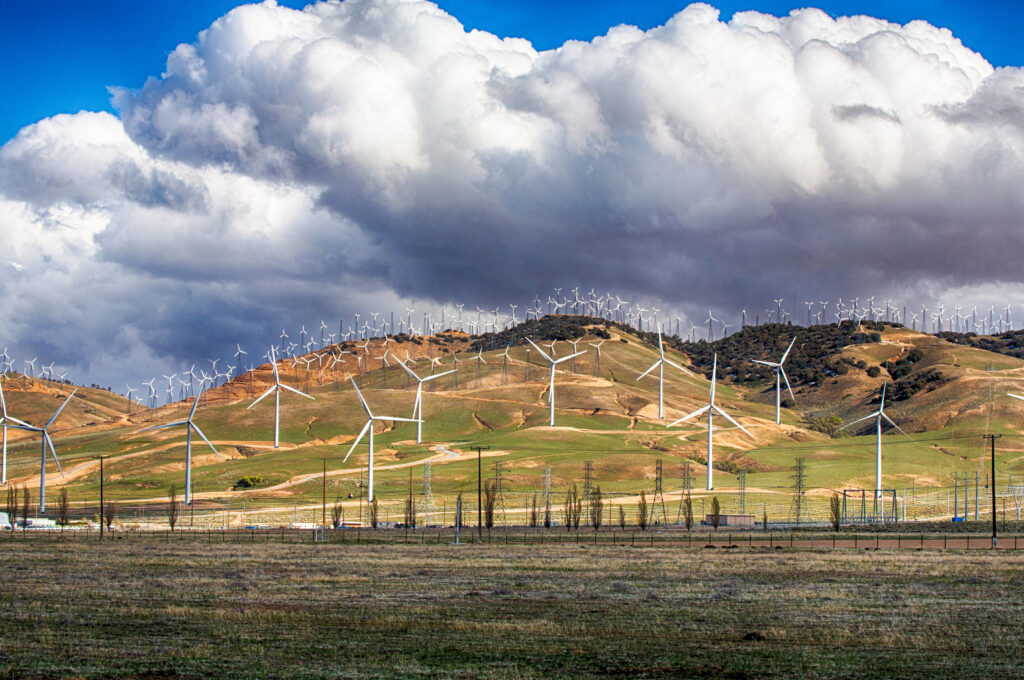 Photo credit: Shutterstock.com/Gary C. Tognoni
Photo credit: Shutterstock.com/Gary C. Tognoni
This editorial was originally published in the Bakersfield Californian.
By Kate Gordon and Craig Segall
It’s time to face the facts: California’s cap-and-trade system can’t achieve the state’s goals.
When Gov. Arnold Schwarzenegger authorized the system to cap carbon emissions in 2006, he recalled his earlier weightlifting career: “In fitness, the field I come from, it’s all part of goals. You step on the scales and say, ‘I weigh 220 pounds; I want to get my body weight down to 200. Here’s the plan and how to do it.”’
But just as setting a numerical goal doesn’t magically get you to competition weight, capping in-state carbon emissions doesn’t automatically result in a low-carbon economy. A quick tour around Bakersfield and the broader Kern County area underscores just how embedded the oil industry is in the region, and how much thought needs to go into the energy transition here — much more than just setting a target. Cap-and-trade is just one piece of the drive toward a global clean energy transition — and it’s a piece that’s increasingly small compared to the size of the challenge and its real stakes in the Central Valley and all over the state.
Instead, policymakers, lobbyists and advocates are focused on the fine-grained details of program design and spending priorities for the limited but important pool of dollars the program generates.
But it’s ultimately small ball compared to the scale of the climate challenge. Cap-and-trade has recently produced around $4 billion in revenues and falling — just over 1% of the state budget. If we keep focus on that 1%, we’ll never shift investments at the scale needed to compete globally on clean energy, or to seriously address climate resilience inside our borders. The growing threat of climate disasters like the L.A. fires, which alone will cost the state at least $25 billion, is a stark reminder of why we need to transform our entire economic system, not just individual regulatory programs.
System transformation brings both opportunities and tradeoffs. If we accept that capping and trading carbon emissions within our state borders isn’t going to drive a truly sustainable and resilient economy, we also have to start paying more attention to system-wide impacts of all our policy choices.
The same is true on the revenue side. This legislative session, all conversations keep returning to affordability. But so far, the cap-and-trade revenue discussion has focused only on lowering near-term household costs, not on addressing systemic affordability challenges.
It’s time to think beyond cap-and-trade as the silver bullet of our state’s climate leadership, and instead to focus on how the program fits into a broader sustainable economic strategy. That means wrestling seriously with California’s famously volatile budgets, including exploring ways to broaden the state’s revenue base away from over-dependence on high income earners. It means considering cap-and-trade revenues as assets we could bond or borrow against to achieve bigger and broader goals around energy transition and climate resilience. It means shoring up the state’s Rainy Day Fund to buffer against increasingly severe and frequent climate shocks.
And fundamentally, it means thinking about climate leadership not only as tons of carbon avoided within the state, but by the overall strength of our low-carbon economy. It means driving sustainability and resilience through public investments across the entire state budget, from infrastructure spending to workforce training to business support.
Schwarzenegger didn’t become a weightlifting champion simply by setting a fitness goal — and building a climate-smart economy can’t ride simply on capping emissions. As we debate the program’s future, let’s do it with an eye toward California’s ability to lead the world in building a more sustainable and resilient economy — one that benefits all Californians.
Kate Gordon is CEO of California Forward and former senior climate policy adviser to Governor Newsom. Craig Segall is former deputy executive officer and assistant chief counsel of the California Air Resources Board.

